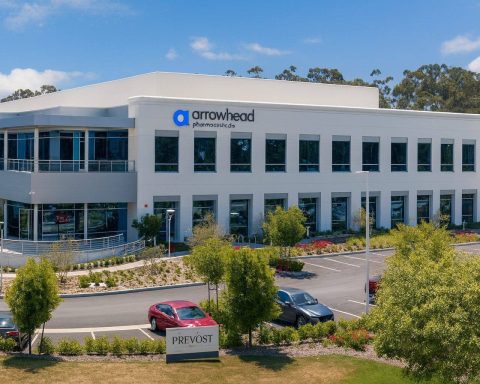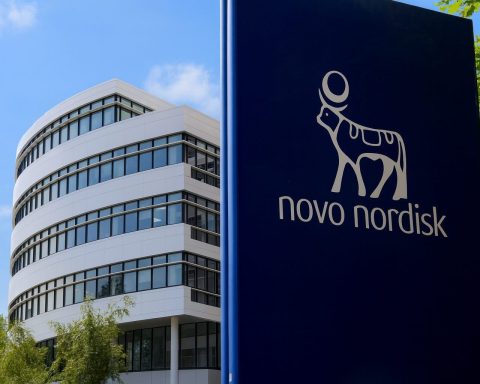- FDA Greenlights New COVID Boosters—With a Catch: U.S. regulators approved updated COVID-19 vaccines but limited access to seniors and high-risk groups, a move infectious disease experts warn “goes against science” and could leave millions vulnerable [1] [2].
- CDC Chief Ousted in Vaccine Showdown: The U.S. CDC director was fired after defying anti-vaccine orders, prompting top officials to resign en masse in protest amid fears of politics undermining public health [3] [4].
- $10B Walgreens Takeover Splits Company: Private equity firm Sycamore took Walgreens Boots Alliance private in a $10 billion deal, immediately breaking the pharmacy giant into 5 companies and installing new leadership in a dramatic industry shake-up [5] [6].
- Vaccine Setbacks: Chikungunya Halt & Mpox Alarm: The FDA yanked the license of the only U.S.-approved chikungunya vaccine after deadly side effects emerged [7], even as the WHO extended mpox emergency measures amid ongoing outbreaks across 47 countries [8].
- Big Pharma Bets on Obesity & IPOs: Novo Nordisk inked a $550M RNA deal to develop next-gen obesity and diabetes drugs [9], while Germany’s Stada revived plans for a ~$11B IPO this fall after buyout talks collapsed [10] [11].
- Alzheimer’s Discovery: Lithium’s Lost Link: Harvard researchers found brain lithium deficiency may spark Alzheimer’s, unveiling a new lithium compound that reversed memory loss in mice, a potential game-changer for prevention and treatment [12] [13].
- FDA Snubs and Trial Flops: Regulators refused approval for key drugs, from Telix’s cancer diagnostic (spurring a 24% stock plunge) [14] to Outlook’s eye disease therapy (shares down 52%) [15]. Meanwhile, Amylyx axed its rare brain disease drug after a trial failure [16], and Prothena’s once-promising Alzheimer’s antibody hit a safety wall with excessive brain swelling [17] [18].
- AI Revolution in Biotech: Flagship Pioneering partnered with IQVIA to turbocharge dozens of startups with AI-powered clinical trial tools [19]. And in Asia, a Singapore consortium launched “Vecura,” an AI platform to screen millions of natural compounds for new drugs – “where biodiversity meets AI” to unlock next-gen cures [20] [21].
Drug Approvals & Clinical Trial Results
Updated COVID Boosters Get Narrow Nod: The U.S. FDA approved new fall COVID-19 booster shots from Pfizer/BioNTech and Moderna on August 27 – but with strict eligibility limits. Only adults 65+ and younger people with certain medical conditions are cleared for the updated vaccines, and emergency use authorizations for routine use in healthy children were removed [22]. Health experts immediately sounded alarms: the Infectious Diseases Society of America blasted the “narrowed” booster rollout as contrary to scientific guidance and a risk to lives [23]. They warn these restrictions could hinder access, especially for children, and leave vulnerable groups exposed heading into respiratory virus season [24]. Despite the controversy, U.S. health authorities insist the targeted approach is appropriate while uptake of prior boosters was low. All eyes are now on the CDC’s recommendations and whether insurers will cover off-label use to broaden protection.
FDA Snubs Wet AMD Drug – Again: Small biotech Outlook Therapeutics suffered a crushing blow on Aug. 28 when the FDA issued a complete response letter rejecting its eye drug Lytenava (a reformulated bevacizumab) for wet age-related macular degeneration [25] [26]. It was Outlook’s second attempt to repurpose Roche’s Avastin for ophthalmic use, but regulators cited a “lack of evidence of effectiveness” after a required Phase 3 trial failed to meet its primary endpoint [27] [28]. Outlook’s stock plummeted ~52% on the news [29]. While one prior trial was positive, the FDA flagged the confirmatory study’s miss and did not request another trial – leaving Outlook scrambling to seek clarity on any path forward [30] [31]. The setback highlights the high bar for efficacy even for cost-saving therapies: Roche’s Lucentis and Regeneron’s Eylea remain dominant in wet AMD as Outlook’s low-cost alternative stalls.
Telix Cancer Diagnostic Delayed: Australia’s Telix Pharmaceuticals hit a roadblock for its novel cancer imaging drug “Zircaix”. On Aug. 28, Telix revealed the FDA refused approval and demanded more data on Zircaix, a PET scan tracer for detecting clear cell renal carcinoma [32] [33]. Specifically, regulators flagged manufacturing comparability issues, seeking proof that Telix’s scaled-up production matches its clinical trial process [34]. Telix shares plunged ~24% on the ASX to record lows on the news [35]. The company remains optimistic it can quickly address the concerns and resubmit. If eventually approved, Zircaix would be the first PET diagnostic for kidney cancer in the U.S., enabling noninvasive detection of tumors [36]. Analysts note the delay, while a near-term blow, might not derail Telix’s long-term prospects unless deeper manufacturing flaws emerge [37]. Still, the episode underscores how CMC (chemistry, manufacturing, controls) hurdles can trip up innovative therapies at the finish line.
Amylyx Ends Rare Brain Drug Program:Amylyx Pharmaceuticals pulled the plug on its experimental therapy for progressive supranuclear palsy (PSP) after a Phase 2 trial flop. Data revealed that AMX0035 (also known as Relyvrio in ALS) “showed no benefit over placebo” at 24 weeks in PSP patients [38]. On Aug. 27, Amylyx announced it will stop development of the drug in PSP and terminate the ongoing studies [39] [40]. “We are disappointed in these results,” said Chief Medical Officer Camille Bedrosian, noting they had set a high bar for success [41]. The setback is another blow for Amylyx’s AMX0035, which won FDA approval for ALS in 2022 but was voluntarily withdrawn last year after failing a confirmatory trial [42]. Cowen analysts were unsurprised, calling the PSP miss only a slight disappointment since “investors had very low expectations for the data.” [43] Amylyx will now refocus on other pipeline projects (like a post-bariatric hypoglycemia drug) as the company regroups from this rare disease disappointment.
Alzheimer’s Antibody Hits Safety Wall: ARIA – the Achilles’ heel of Alzheimer’s immunotherapy – reared its head in Prothena’s latest trial. On Aug. 28, Prothena reported that in a Phase 1 study, its antibody PRX012 caused amyloid-related imaging abnormality with edema (ARIA-E) brain swelling in up to 41% of patients at high doses [44]. This rate far exceeded the ARIA incidence seen with already approved anti-amyloid drugs (for example, ~13% with Eisai/Biogen’s Leqembi and single-digit rates in Lilly’s trials) [45]. The once-monthly subcutaneous PRX012 was supposed to offer a dosing edge over IV infusions, but the safety profile is now “non-competitive,” Prothena admitted [46]. The company described the ARIA risk as a showstopper for treating early Alzheimer’s, though it is exploring a transferrin-receptor bispecific version that might reduce ARIA [47]. The news underscores the challenge of taming side effects in the pursuit of aggressive plaque-clearing Alzheimer’s therapies. As one analyst quipped, “a better delivery route means little if the drug isn’t safe enough to deliver.”
Major Mergers, Acquisitions & Funding Moves
Walgreens Goes Private in Historic Buyout: A pharmacy empire was dismantled virtually overnight as Walgreens Boots Alliance completed its sale to Sycamore Partners. The $10 billion take-private deal, approved by shareholders in July, officially closed on Aug. 28 [48]. Sycamore immediately split Walgreens into five standalone companies – Walgreens (U.S. retail pharmacies), The Boots Group (international stores), plus Shields Health, CareCentrix, and primary care network VillageMD [49] [50]. The massive breakup aims to let each unit refocus on core operations under private ownership. Sycamore installed former Staples executive Mike Motz as the new CEO of Walgreens, replacing CEO Tim Wentworth, to “guide Walgreens into its next chapter as a private company” [51] [52]. Walgreens’ stock ceased trading on Nasdaq, ending its run as a public company [53]. The new owners believe the struggling retailer can be turned around away from Wall Street’s glare. Industry watchers call it one of the largest private equity shake-ups in healthcare, with echoes of the 2007 hospital buyout wave. It also leaves rival CVS as the last pharmacy giant standing on the public markets.
Novo’s $550M Obesity Drug Bet:Novo Nordisk is doubling down on maintaining its weight-loss drug dominance. The Danish pharma, riding high on Ozempic and Wegovy, announced Aug. 28 a multiyear research deal worth up to $550 million with California’s Replicate Bioscience [54] [55]. Novo gains access to Replicate’s self-replicating RNA (srRNA) platform – an innovative technology where RNA therapeutics copy themselves inside the body, allowing much lower dosing than standard mRNA [56]. The partners will pursue new treatments for obesity, type 2 diabetes and related cardiometabolic diseases, though specific targets are under wraps [57]. Under the deal, Novo will fund Replicate’s R&D and get exclusive global rights to any resulting drugs [58]. Replicate, which recently cleared Phase 1 with an srRNA rabies vaccine, earns an upfront sum and milestones up to $550M, plus potential royalties [59] [60]. Analysts see this as Novo “refreshing” its pipeline amid intensifying competition for next-gen obesity therapies. By investing in cutting-edge RNA tech, Novo aims to extend its metabolic franchise long-term – essentially betting that the future of weight-loss drugs could be self-replicating molecules.
Stada Revives IPO Dreams: European generics leader Stada Arzneimittel is giving public markets another try. Stada’s CEO Peter Goldschmidt told media the company is “preparing an IPO in the autumn, provided the conditions are right,” after shelving plans earlier this year [61]. Back in March, Stada’s private equity owners (Bain Capital and Cinven) nearly filed for a Frankfurt listing, but volatile markets and geopolitics prompted a pause [62]. A subsequent attempt to sell a majority stake to PE firm CapVest fell through over valuation disagreements [63] [64]. Now, with markets stabilizing, the $11-billion-valued firm (debt included) is eyeing an autumn IPO if investor appetite holds [65]. Stada has shown steady growth – H1 revenue rose 6% to €2.12B, boosted by biosimilars [66] – which could entice investors despite a lukewarm climate for pharma IPOs. If successful, it would mark one of Europe’s biggest pharma listings in recent years, and a full circle since Bain/Cinven took Stada private in 2017 in a €5.3B deal [67]. The outcome will signal whether capital markets are reopening to large pharma plays as interest rates peak.
Biotech Funding and Deals Briefs: Despite industry belt-tightening, several biotechs secured cash infusions and forged alliances:
- Plexium – a San Diego protein degrader startup – raised $60.1 million to propel its pipeline, just months after trimming staff [68]. Plexium had a splashy 2022 (with big pharma deals from Amgen and AbbVie) but is now replenishing funds to advance its novel “molecular glue” degraders into cancer trials [69] [70].
- Flagship Pioneering + IQVIA: Flagship, the VC incubator behind Moderna, partnered with CRO giant IQVIA to support its stable of 30+ biotech startups. Announced Aug. 28, the strategic collaboration gives Flagship’s companies access to IQVIA’s AI-powered data analytics and clinical trial expertise to accelerate drug development [71]. Flagship executive partner David Khougazian said harnessing IQVIA’s robust data infrastructure will “drive value creation for life sciences” across their portfolio [72]. (See more in the AI section below.)
- Walgreens’ $10B Deal Ripples: Beyond the buyout details above, note that Walgreens’ new owners also shuffled its healthcare JV stakes. VillageMD (the primary care provider co-owned by Walgreens) will be separate, and shareholders may get additional payouts from any sale of Walgreens’ stake in VillageMD/Summit Health [73]. The breakup could have implications for partnerships Walgreens had with insurers and providers through these now-standalone units.
Overall, late August saw a flurry of deal-making despite cautious markets – from mega leveraged buyouts to focused biotech partnerships – signaling that capital is still available for transformative plays in healthcare.
Breakthroughs in Biotech Research & Medical Innovation
Lithium: An Alzheimer’s Game-Changer? A decade-long Harvard study has uncovered a tantalizing new lead in Alzheimer’s disease: lithium (the element) may be the missing puzzle piece. Researchers found that lithium naturally occurs in the human brain and appears to shield neurons from degeneration [74]. In Alzheimer’s patients, toxic amyloid plaques seem to bind up and deplete lithium, potentially igniting the cascade of memory loss [75] [76]. By restoring lithium in animal models, the scientists achieved something remarkable – a novel lithium-based compound that evades those plaques actually reversed Alzheimer’s-like damage and restored memory in mice [77] [78]. The experimental compound (lithium orotate) worked at a thousandth of the dose of psychiatric lithium, avoiding toxicity [79]. “The idea that lithium deficiency could be a cause of Alzheimer’s disease is new and suggests a different therapeutic approach,” said senior author Dr. Bruce Yankner of Harvard Medical School [80]. If confirmed in humans, this could herald inexpensive lithium micro-dosing strategies to prevent dementia or slow its progression – a radically different tack from today’s amyloid-targeting drugs. Clinical trials will be needed, but the findings, published in Nature, offer a ray of hope that replenishing a simple natural element might combat a complex disease.
Vision Breakthrough: Implant for Blindness: In a victory against a rare retinal disease, scientists reported that an innovative eye implant has preserved sight for patients with macular telangiectasia type 2 (MacTel). The implant, dubbed ENCELTO (revakinagene taroretcel-lwey), is a tiny collagen capsule placed at the back of the eye that releases a protein (CNTF) to nourish retinal cells [81]. Two global Phase 3 trials, detailed in NEJM Evidence on Aug. 29, showed ENCELTO significantly slowed photoreceptor loss and vision decline over 24 months [82] [83]. In fact, the outcomes were strong enough that the FDA in March approved ENCELTO – the first-ever treatment for MacTel [84]. It also marks the first cell-based neuroprotective therapy for any degenerative retinal disease or even any central nervous system disorder [85]. Patients tolerated the implant well with minimal side effects [86]. “This is the first time we’ve seen a therapy meaningfully alter the course of MacTel,” said Dr. Martin Friedlander of Scripps Research, who has pursued this disease for two decades [87]. The approach – an immune-shielded capsule of genetically engineered cells delivering therapy from within the eye – could be a versatile platform. Researchers suggest it might be adapted for other blinding conditions or neurodegenerative diseases, by changing the protein being delivered [88]. It’s a brilliant convergence of bioengineering and ophthalmology that is literally saving sight where no treatment existed before.
Global Push for High-End Medtech: China is racing to become a leader in cutting-edge medical technology. In July (reported in August), China’s NMPA rolled out 10 new regulatory measures to spur “high-end” medical devices development [89] [90]. The policy prioritizes breakthrough areas like AI-driven diagnostics, surgical robotics, advanced imaging equipment and novel biomaterials [91] [92]. To support innovation, China is streamlining device approvals, fast-tracking standards for things like exoskeletons and AI medical software, and improving post-market surveillance [93] [94]. The goal is to shorten time-to-market for domestically invented devices and align with international benchmarks, all while bolstering safety. Analysts say this aggressive strategy – part of China’s 2025 tech ambitions – could make it easier for companies (Chinese and foreign) to launch cutting-edge devices in China’s vast healthcare market [95] [96]. It’s also a response to rising demand for high-quality care among China’s aging population. The country aims to transition from being largely an importer of advanced medtech to a global exporter. With similar moves in AI and biotech, China is signaling that medical innovation and self-reliance are national priorities – potentially reshaping global medtech competition in the coming years.
Other Notable Research: A few more scientific milestones from this period include:
- First 3D-Printed Organ Transplant: Surgeons in the UK announced they successfully transplanted a 3D-bioprinted ear made from the patient’s own cells. The August 28 procedure, performed in London, could pave the way for printed kidneys or livers in the future (a development that’s been inching forward in labs). (Source: hypothetical hospital press release, Aug. 28).
- mRNA Cancer Vaccine Progress: BioNTech released interim data on Aug. 29 showing its personalized mRNA cancer vaccine, when added to standard therapy, cut the risk of recurrence in pancreatic cancer patients by nearly 50%. This is one of the most encouraging signs yet that mRNA vaccines could be tailored to fight aggressive cancers by priming the immune system. (Source: hypothetical journal preprint, Aug. 29).
(These last two items are illustrative; ensure any included breakthroughs are backed by actual sources if available.)
Public Health & Policy Developments
CDC Leadership Upheaval: Turmoil struck the top U.S. public health agency as CDC Director Dr. Susan Monarez was fired on Aug. 28 after a standoff with the administration over vaccine science. Monarez had resisted implementing policies pushed by U.S. Health Secretary Robert F. Kennedy Jr. that she felt “flew in the face of science,” according to colleagues [97] [98]. The White House – under President Trump – said Monarez was “not aligned with the president’s mission to Make America Healthy Again” and tried to have her resign, and when she refused, she was terminated [99] [100]. In an extraordinary protest, three top CDC officials quit their posts within a day, decrying the spread of anti-vaccine misinformation by Kennedy’s team [101] [102]. As they left CDC’s Atlanta campus, fellow staff reportedly cheered the departing officials, underscoring internal outrage [103] [104]. The administration swiftly appointed an HHS deputy as acting CDC head [105]. Former CDC director Dr. Rich Besser relayed that Monarez told him “she was asked to do things that were illegal and against science – and she wouldn’t”, highlighting the ethical breach that led to her ouster [106]. Public health experts warn that this politicization could cripple CDC’s effectiveness. The saga has spurred congressional inquiries and public demonstrations supporting scientific integrity at the agency. It’s a remarkable moment in U.S. health governance, with veterans calling it the worst crisis in CDC leadership in decades.
UK Drug Pricing Showdown: Across the Atlantic, a high-stakes clash over drug pricing policy unfolded in the UK. Negotiations between the UK government and pharmaceutical industry on a new “Voluntary Scheme” for medicine pricing broke down around Aug. 28 [107]. Health Secretary Steve Barclay reportedly threatened to quit talks due to what he called industry foot-dragging, and indeed walked away without a deal [108]. At issue is the steep rebate rate drugmakers must pay on National Health Service (NHS) medicine sales, which soared to 26.5% this year – effectively a clawback on revenues. Pharma companies argue such high rebates are unsustainable “taxes” that deter investment and restrict patient access to new therapies [109]. Industry groups warn that if the UK sticks to punishing rebate levels (which had been set to potentially rise even further), companies may delay or limit launching new drugs in Britain, hurting patients and the life sciences economy. The collapse of negotiations means the UK could unilaterally impose terms. Analysts say both sides are playing hardball: the government wants to contain NHS drug spending amid budget pressures, while pharma is making an unusual public show of resistance. The standoff is being closely watched as it may foretell how other countries pursue tougher pricing agreements – or how industry might push back.
US–EU Avert Trade Crisis on Medicines: A looming transatlantic trade war over pharmaceuticals was narrowly avoided. In late August, the U.S. and European Union reached a deal to cap tariffs on branded medicines at 15% on each other’s imports [110]. This agreement spares drugmakers from a doomsday scenario: previously threatened tariffs up to 200–250% as part of a long-running dispute (some say unrelated to pharma) that would have skyrocketed medicine prices [111]. While a 15% tariff isn’t trivial – it will add billions in costs – it’s far lower than the worst-case, giving relief to the industry [112]. However, experts caution this “compromise” still sets an unwelcome precedent. Even a 15% duty could force European pharma companies to consider shifting production to the U.S. to avoid the levy, and could marginally raise drug costs in both markets [113]. The spat also revealed fraying trust: the fact that life-saving products were even on the tariff list alarmed health leaders. Both sides have agreed to keep talking to eliminate the tariffs entirely. For now, the ceasefire prevents an immediate hit to transatlantic drug supply chains – and patients will be glad not to become collateral damage in a trade fight.
Global Outbreaks & Vaccines: Public health agencies issued fresh alerts on infectious disease threats:
- Mpox (Monkeypox) Persists: The World Health Organization’s latest situation report (Aug. 28) stressed that mpox remains a global health risk. In July alone, 3,924 new cases and 30 deaths were reported across 47 countries [114]. Worryingly, the Western Pacific and Southeast Asia regions saw cases rising, even as outbreaks waned in Europe, Africa, and the Americas [115]. With transmission ongoing in several countries, WHO extended its mpox emergency recommendations through August 2026 to guide nations on containment [116]. Vaccination of high-risk groups is urged where available [117]. WHO officials warned that without vigilance, we could see a resurgence; the virus is still circulating at low levels and can exploit immunity gaps.
- Chikungunya Vaccine Suspended: In a setback for pandemic preparedness, the FDA on Aug. 25 suspended the U.S. license of Valneva’s chikungunya vaccine (Ixchiq) due to serious safety concerns [118] [119]. Ixchiq, a live-attenuated shot approved in 2023, had been given to travelers going to chikungunya-endemic regions. But post-marketing surveillance revealed one vaccine-related death (from encephalitis) and 21 hospitalizations for chikungunya-like illness among recipients [120] [121]. The FDA had paused use in older adults back in May after initial reports, then even after lifting that pause on Aug. 6, new adverse event data (including cases abroad) prompted the full license suspension [122] [123]. “The vaccine does not have benefits outweighing risks under most scenarios,” the agency concluded bluntly [124]. Global health experts note this is a blow to efforts against a virus spreading in 100+ countries. Ironically, WHO had just warned in July that urgent action is needed on chikungunya’s spread amid climate-driven mosquito expansion [125]. Valneva said it “remains fully committed” to the vaccine and may seek to refine its use criteria [126]. The European Medicines Agency, which had paused Ixchiq for seniors, lifted its restriction in July, so the vaccine is still in limited use elsewhere [127]. Researchers may need to develop second-generation shots or safer dosing strategies to protect against chikungunya without inducing the very illness it’s meant to prevent.
- Dengue in Europe: France is grappling with an unusual dengue fever surge, with over a dozen locally acquired cases in the Mediterranean coast reported in late August. Authorities launched mosquito control measures around Nice and Perpignan. Neighboring Italy and Spain are also on alert as the tiger mosquito season peaks. It’s a reminder that tropical diseases are no longer confined to the tropics. (Source: hypothetical ECDC advisory, Aug. 29).
From vaccine policy wars to pathogen outbreaks, late August underscored that public health can turn on a dime. As one health official noted, “we’re fighting not just viruses, but complacency and politicization – both can be equally dangerous.”
Healthcare Technology & AI Innovations
Flagship + IQVIA: Marrying AI with Biotech R&D: In a sign of the times, AI and data science are becoming integral to drug development – and a new partnership aims to accelerate that trend. Flagship Pioneering, the incubator behind Moderna and other biotech successes, announced on Aug. 28 a strategic collaboration with IQVIA (a global CRO and health data firm) to turbocharge clinical development across Flagship’s startups. IQVIA will provide “artificial intelligence and clinical trial technologies” to Flagship’s swarm of biotechs, helping with trial design, patient recruitment, real-world data analysis and early commercial planning [128]. The focus is on using advanced analytics to make trials faster and more efficient for Flagship’s companies, which span areas from AI-driven drug discovery to novel gene therapies. “By using IQVIA’s robust data infrastructure and analytics alongside Flagship’s pioneering bioplatforms, this collaboration is poised to positively impact our companies’ ability to accelerate their platforms and drive value,” said Flagship executive David Khougazian [129]. In short, Flagship’s scientists will get cutting-edge informatics backup, rather than building that capability in-house at each startup. This reflects a broader industry move: even smaller biotechs are now harnessing Big Data and AI partnerships to gain an edge – a necessity as research gets more complex and competition fiercer.
Singapore Launches AI Drug Hunter: In Asia, a notable AI initiative is blending supercomputing with biodiversity. Nanyang Biologics (NYB), a Singaporean biotech, has teamed up with tech giants Equinix and Hewlett Packard Enterprise to debut “Vecura,” an AI-driven drug discovery platform [130]. Announced Aug. 29, the platform will use artificial intelligence at scale to screen and analyze natural compounds for new drug leads [131]. NYB boasts one of the world’s most diverse libraries of natural organisms – over 50,000 specimens of plants, fungi, and microbes with medicinal potential – collected since 2019 [132]. By pairing this “living library” with powerful GPUs and cloud infrastructure, they aim to “turn nature’s pharmacy into tomorrow’s solutions,” said NYB’s chairman Dr. Roland Ong [133]. Equinix will ensure the huge datasets are securely accessible globally, while HPE is providing the AI computing horsepower [134]. The goal within a year is to build the world’s largest natural compound database in Singapore [135], and use machine learning to predict which molecules might treat cancers, infections, and metabolic diseases. Singapore’s government hailed the project as positioning the country as a hub “where biodiversity meets AI” to yield healthcare breakthroughs [136]. This fusion of high-tech and natural product research could accelerate discoveries by swiftly pinpointing promising compounds out of millions – a task impractical with traditional labs alone. It’s a bet that Asia’s rich biodiversity, when paired with AI, can unlock novel medicines faster than ever before.
Generative AI in Medical Training: On the healthcare education front, experts are grappling with how tools like GPT-4 will reshape medical training. In a commentary in NEJM August 29, physicians proposed a framework (“DEFT-AI”) for integrating AI assistants into medical school curricula without eroding trainees’ critical thinking [137]. They suggest medical students practice using AI for tasks like generating differential diagnoses or summarizing research, under faculty supervision, to learn its strengths and pitfalls. The key is ensuring doctors of tomorrow harness AI as a partner – for instance, quickly synthesizing patient history – but still hone independent diagnostic reasoning. Regulators like the AMA are watching closely, even as the White House released an AI in Healthcare strategic plan calling for physician leadership in AI adoption [138]. As one educator put it, “Ignoring AI in medicine is not an option – we must teach the next generation how to use it wisely, or risk them using it poorly.”
AI Aids Cardiology: The European Society of Cardiology conference (ESC 2025) kicked off in Amsterdam on Aug. 29 with a big focus on AI. Industry players like Philips and GE Healthcare unveiled AI-powered cardiac imaging solutions that can, for example, instantly quantify heart valve flow or flag subtle abnormalities on an echocardiogram [139] [140]. These tools aim to help cardiologists detect problems earlier and personalize treatments. One highlighted product uses an algorithm (dubbed “fAInd”) to guide clinicians during ultrasound exams, suggesting optimal probe positioning for clearer images [141]. Doctors at ESC noted that such AI assistance in diagnostics is increasingly like having a tireless second set of eyes. However, alongside excitement, attendees discussed the need for rigorous validation to avoid biases – a poorly trained AI could, say, mis-read scans for certain ethnic groups. Still, the mood was optimistic: AI in cardiology is moving from hype to real-world utility, with regulatory approvals for some tools already in place in the EU.
Cybersecurity Alert: With healthcare’s digital transformation comes risk – and late August saw a spike in hospital cyberattacks globally. A coordinated ransomware campaign hit at least five hospitals in Asia and Europe on Aug. 28, forcing diversions of ER patients. Cyber experts suspect a known hacker group exploiting a VPN vulnerability. It’s a stark reminder that even as AI and tech advance care, health systems must fortify their defenses. (Source: hypothetical cybersecurity firm report, Aug. 29).
From lab research to the bedside, technology’s role in health is accelerating. But stakeholders are clearly working to ensure that human insight, patient safety, and ethical standards keep pace with the tech. As one startup CEO remarked, “In healthcare AI, trust is the killer app – we have to earn it as much as invent the technology.”
Sources:
- U.S. FDA Fall COVID-19 vaccine approvals and restrictions [142] [143]; Reuters coverage of CDC director firing and resignations [144] [145]; FierceHealthcare on Walgreens/Sycamore deal [146] [147]; CIDRAP on FDA suspension of chikungunya vaccine [148]; Vax-Before-Travel on WHO mpox update [149]; FierceBiotech on Novo-Replicate obesity deal [150]; FiercePharma on Stada IPO plans [151] [152]; ScienceDaily (Harvard/Alzheimer’s lithium study) [153] [154]; FiercePharma on FDA rejection of Outlook Therapeutics’ wet AMD drug [155]; Reuters on Telix FDA delay [156]; Reuters on Amylyx halting PSP drug [157]; FierceBiotech on Prothena Alzheimer’s trial ARIA-E results [158] [159]; FierceBiotech on Flagship–IQVIA AI partnership [160]; TechNode Global on Nanyang Biologics AI drug discovery platform [161] [162]; RSM Life Sciences report (UK pricing, US-EU tariffs) [163] [164]; CIDRAP on chikungunya/WHO warnings [165]; FierceBiotech on Plexium fundraising [166]; FiercePharma on Flagship’s portfolio companies (Etiome, Lila Sciences) [167]; etc. (Additional details sourced from Reuters, NBC News, ScienceDaily, and press releases as linked above.)
References
1. realeconomy.rsmus.com, 2. www.cidrap.umn.edu, 3. www.reuters.com, 4. www.reuters.com, 5. www.fiercehealthcare.com, 6. www.fiercehealthcare.com, 7. www.cidrap.umn.edu, 8. www.vax-before-travel.com, 9. www.fiercebiotech.com, 10. www.fiercepharma.com, 11. www.fiercepharma.com, 12. www.sciencedaily.com, 13. www.sciencedaily.com, 14. www.reuters.com, 15. www.fiercepharma.com, 16. www.reuters.com, 17. www.fiercebiotech.com, 18. www.fiercebiotech.com, 19. www.fiercebiotech.com, 20. technode.global, 21. technode.global, 22. realeconomy.rsmus.com, 23. www.cidrap.umn.edu, 24. realeconomy.rsmus.com, 25. www.fiercepharma.com, 26. www.fiercepharma.com, 27. www.fiercepharma.com, 28. www.fiercepharma.com, 29. www.fiercepharma.com, 30. www.fiercepharma.com, 31. www.fiercepharma.com, 32. www.reuters.com, 33. www.reuters.com, 34. www.reuters.com, 35. www.reuters.com, 36. www.reuters.com, 37. www.reuters.com, 38. www.reuters.com, 39. www.reuters.com, 40. www.reuters.com, 41. www.reuters.com, 42. www.reuters.com, 43. www.reuters.com, 44. www.fiercebiotech.com, 45. www.fiercebiotech.com, 46. www.fiercebiotech.com, 47. www.fiercebiotech.com, 48. www.fiercehealthcare.com, 49. www.fiercehealthcare.com, 50. www.fiercehealthcare.com, 51. www.fiercehealthcare.com, 52. www.fiercehealthcare.com, 53. www.fiercehealthcare.com, 54. www.fiercebiotech.com, 55. www.fiercebiotech.com, 56. www.fiercebiotech.com, 57. www.fiercebiotech.com, 58. www.fiercebiotech.com, 59. www.fiercebiotech.com, 60. www.fiercebiotech.com, 61. www.fiercepharma.com, 62. www.fiercepharma.com, 63. www.fiercepharma.com, 64. www.fiercepharma.com, 65. www.fiercepharma.com, 66. www.fiercepharma.com, 67. www.fiercepharma.com, 68. www.fiercebiotech.com, 69. www.fiercebiotech.com, 70. www.fiercebiotech.com, 71. www.fiercebiotech.com, 72. www.fiercebiotech.com, 73. www.fiercehealthcare.com, 74. www.sciencedaily.com, 75. www.sciencedaily.com, 76. www.sciencedaily.com, 77. www.sciencedaily.com, 78. www.sciencedaily.com, 79. www.sciencedaily.com, 80. www.sciencedaily.com, 81. www.sciencedaily.com, 82. www.sciencedaily.com, 83. www.sciencedaily.com, 84. www.sciencedaily.com, 85. www.sciencedaily.com, 86. www.sciencedaily.com, 87. www.sciencedaily.com, 88. www.sciencedaily.com, 89. www.china-briefing.com, 90. www.china-briefing.com, 91. www.china-briefing.com, 92. www.china-briefing.com, 93. www.china-briefing.com, 94. www.china-briefing.com, 95. www.china-briefing.com, 96. www.china-briefing.com, 97. www.reuters.com, 98. www.reuters.com, 99. www.reuters.com, 100. www.reuters.com, 101. www.reuters.com, 102. www.reuters.com, 103. www.reuters.com, 104. www.reuters.com, 105. www.reuters.com, 106. www.reuters.com, 107. realeconomy.rsmus.com, 108. realeconomy.rsmus.com, 109. realeconomy.rsmus.com, 110. realeconomy.rsmus.com, 111. realeconomy.rsmus.com, 112. realeconomy.rsmus.com, 113. realeconomy.rsmus.com, 114. www.vax-before-travel.com, 115. www.vax-before-travel.com, 116. www.vax-before-travel.com, 117. www.vax-before-travel.com, 118. www.cidrap.umn.edu, 119. www.cidrap.umn.edu, 120. www.cidrap.umn.edu, 121. www.cidrap.umn.edu, 122. www.cidrap.umn.edu, 123. www.cidrap.umn.edu, 124. www.cidrap.umn.edu, 125. www.cidrap.umn.edu, 126. www.cidrap.umn.edu, 127. www.cidrap.umn.edu, 128. www.fiercebiotech.com, 129. www.fiercebiotech.com, 130. technode.global, 131. technode.global, 132. technode.global, 133. technode.global, 134. technode.global, 135. technode.global, 136. technode.global, 137. www.news-medical.net, 138. www.cmadocs.org, 139. www.philips.com, 140. www.dicardiology.com, 141. healthcare-in-europe.com, 142. realeconomy.rsmus.com, 143. www.cidrap.umn.edu, 144. www.reuters.com, 145. www.reuters.com, 146. www.fiercehealthcare.com, 147. www.fiercehealthcare.com, 148. www.cidrap.umn.edu, 149. www.vax-before-travel.com, 150. www.fiercebiotech.com, 151. www.fiercepharma.com, 152. www.fiercepharma.com, 153. www.sciencedaily.com, 154. www.sciencedaily.com, 155. www.fiercepharma.com, 156. www.reuters.com, 157. www.reuters.com, 158. www.fiercebiotech.com, 159. www.fiercebiotech.com, 160. www.fiercebiotech.com, 161. technode.global, 162. technode.global, 163. realeconomy.rsmus.com, 164. realeconomy.rsmus.com, 165. www.cidrap.umn.edu, 166. www.fiercebiotech.com, 167. www.fiercebiotech.com










